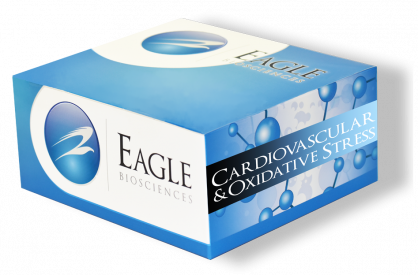Glutathione HPLC Assay Kit
The Glutathione HPLC Assay Kit is For Research Use Only
Size: 100 tests
Incubation Time: 40 minutes
Sample Type: EDTA Blood
Sample Size: 100 µL
Reference Values (Normal):
- Total GSH: 783 – 1346 µmol/l
- GSH reduced: 639 – 1146
- GSH reduced/total: > 80 %
Developed and Manufactured in Germany
Product Support in the USA
It is suggested that each laboratory establish its own normal ranges
Assay Background
Glutathione (GSH) an intracellular tripeptide consisting of glycine, cysteine and glutamic acid. It is common in all tissues and protects the cells against oxidative stress. It is important for the activation or inhibition of enzymes and transport proteins. The transport of amino acids is also controlled by glutathione. Glutathione is very important for the stabilization of protein and non-protein sulfhydryl-groups to maintain a reducing intracellular environment.
Most of the intracellular glutathione is reduced (approx. 90 % in EDTA-blood), only 10 % is oxidized (GSSG). The NADPH-dependent glutathione reductase maintains this steady state. Alterations in the glutathione status are involved in the pathogenesis of several diseases. In discussion are reperfusion damage, liver injury, cancer, diabetes mellitus, cataract, inflammatory diseases, chronic lymphatic edema and radiation damages. Altered glutathione concentrations might also be due to pollution, cigarette smoke, side effects of drugs and aging. In case of oxidative stress the amount of reduced glutathione is diminished. The relation of reduced to oxidized glutathione gives information about the redox and detoxification status of cells and tissue.
The Eagle Biosciences Glutathione HPLC Assay Kit makes it possible to determine glutathione in an easy, fast and precise way. The Glutathione HPLC Assay Kit includes all reagents in ready to use form for preparation and separation of the samples with exception of the columns (IC1800rp) and the controls (IC1800ko). Both can be supplied by Eagle Biosciences. Beside the complete test kit, it is possible to order all components separately. Please request our single component price list.
Related Products
Glutathione HPLC Assay Column
Glutathione HPLC Assay Control Set


